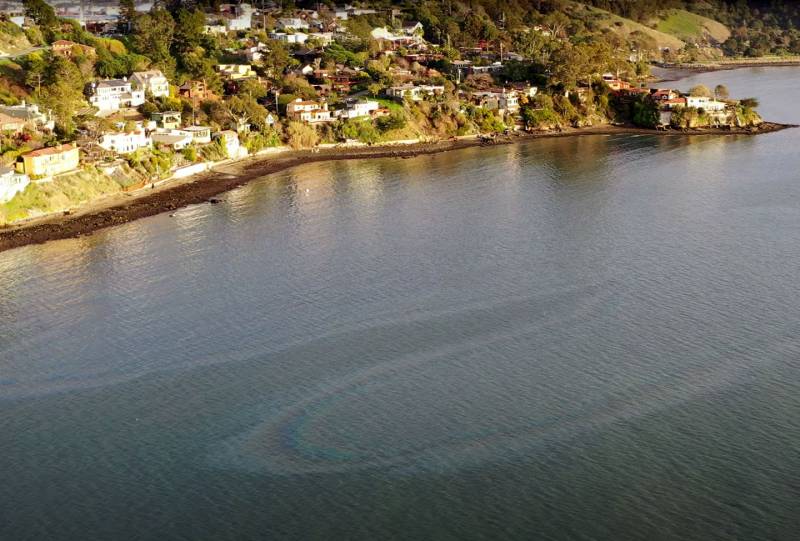This post has been updated.
Federal, state and local agencies are continuing to investigate a spill from a wharf at Chevron's Richmond refinery that spread for several miles across San Francisco Bay, prompted a health advisory for nearby residents and led to the closure of a local beach.
A California Department of Fish and Wildlife spokesman said late Wednesday that up to 750 gallons of low sulfur diesel fuel mixed with water was released from a pipeline on the Chevron Long Wharf on Tuesday. The wharf extends 4,000 feet into the bay from the refinery complex.
In a brief incident report, the Bay Area Air Quality Management District said refinery officials were alerted to a sheen on the water at 2:32 p.m. that afternoon by someone from the local community. The substance was spurting from a quarter-inch hole in the pipeline and continued leaking for as long as two and a half hours before the line was clamped shut.
Contra Costa County officials issued a temporary advisory, warning residents of Richmond, North Richmond and San Pablo who have "respiratory sensitivities" to stay indoors. Health authorities lifted the advisory at 9 p.m. Tuesday.
Helicopter and drone video showed the sheen from the spill spread more than a mile along the Point Richmond shoreline by nightfall Tuesday. By Wednesday morning, responding agencies said the sheen was visible in the water from Point Molate to Brooks Island, a distance of about four miles.
The spill prompted East Bay Regional Park District to close Keller Beach at Point Richmond's Miller-Knox Regional Shoreline. The beach remained closed Wednesday afternoon.
Chevron, the California Department of Fish and Wildlife's Office of Spill Prevention and Response, the U.S. Coast Guard and Contra Costa County health officials are working to contain the spill.
A CDFW spokesman, Eric Laughlin, said crews have not yet observed any oiled wildlife. Laughlin said crews were trying to prevent oil from reaching some of the area's more ecologically sensitive sites, including at least one that houses eelgrass beds.
In a text message Wednesday evening, Laughlin said lab analysis and technical review of the substance in the bay determined it was a mix of diesel and water, and between 500 and 750 gallons had spilled.
In public statements Tuesday, Chevron described the oily liquid as "hydrocarbons." In its preliminary report to the state's hazardous materials spill database, the company said a "mixture of recovered oil and gasoline" was leaking from a pipeline on the refinery wharf at a rate of 5 gallons a minute.

